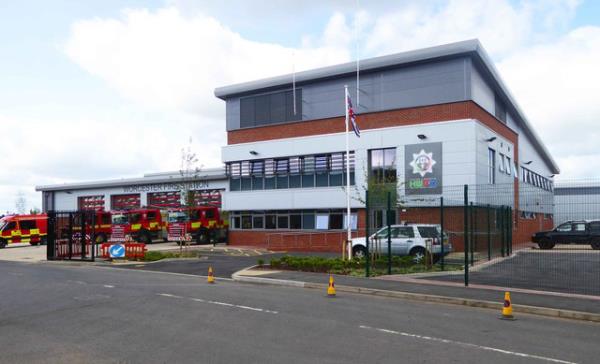26 November 2019

The Hereford and Worcester Fire and Rescue (HWFR) Service consists of 27 full-time fire stations, 22 retained stations and 41 fire engines, strategically located across the two counties.
To put into context just how busy the service is, it receives nearly 10,000 emergency calls each year, requesting assistance to a wide variety of incidents.
The service attends over 6,500 incidents each year, approximately 125 per week.
Being such a hive of activity, HWFR Service needs fast, reliable connectivity between fire stations and fire engines because it can be the difference between life and death.
Furthermore, the provision of this service comes with several challenges.
Three in fact.
First, the HWFR Service must ensure that its firefighters can rely on a powerful network infrastructure that can effectively communicate vital information from one station, or fire engine, to another.
Second, the Service must ensure it can rely on its network to mobilise its retained firefighters as and when they are required, in a timely and efficient manner.
Third, due to its 24/7 capability, the HWFR Service is also responsible for providing its staff with additional and alternative connectivity services.
These services include back office activity, such as rota packages used by retained staff to clock in and out of shifts, basic connectivity back to SHQ and cable, satellite TV and internet access within the stations.
Without the required bandwidth to sustain both emergency services and additional services, the strain on the network has the potential to significantly affect connectivity across the wide area network (WAN).
After an extended seven-year contract with an incumbent national provider and with a growing focus on procurement values, the HWFR Service decided to tender for its ongoing communications requirements.
Not only was it trying to benefit from new cost incentives resulting from a competitive market landscape, it was also looking to upgrade its WAN infrastructure.
MLL Telecom secured an initial three-year contract by the HWFR Service to deploy an upgraded WAN infrastructure to provide a faster, more resilient network, that is easy to manage and has the scope to be expanded if needed.
The new WAN replaced the incumbent provider’s MPLS network, a key step in providing the HWFR Service with a network that could guarantee fewer single points of failure.
The company was charged with enhancing ethernet fibre connectivity based on two overarching factors: price, as well as the provision and design of service.
MLL Telecom was able to offer a fully managed solution replacing the incumbent provider’s MPLS network, at a reduced cost and with additional bandwidth.
It’s solution also provided the HWFR Service with access to real-time network performance reporting and visibility of network utilisation to aid future capacity planning to support new services.
HWFR says the switch to MLL Telecom as a provider for the upgraded WAN has benefited the HWFR Service.
First, from a customer service point of view, MLL Telecom has been a refreshing change from the norm, offering a proactive and helpful service, and working with the HWFR Service to overcome any technical challenges that have arisen during the deployment.
Second, from a technical standpoint, the deployment of the new WAN across HWFR’s 27 sites is already promising a significant increase in bandwidth, particularly to stations that are 24/7 and at a lower cost than the incumbent.








